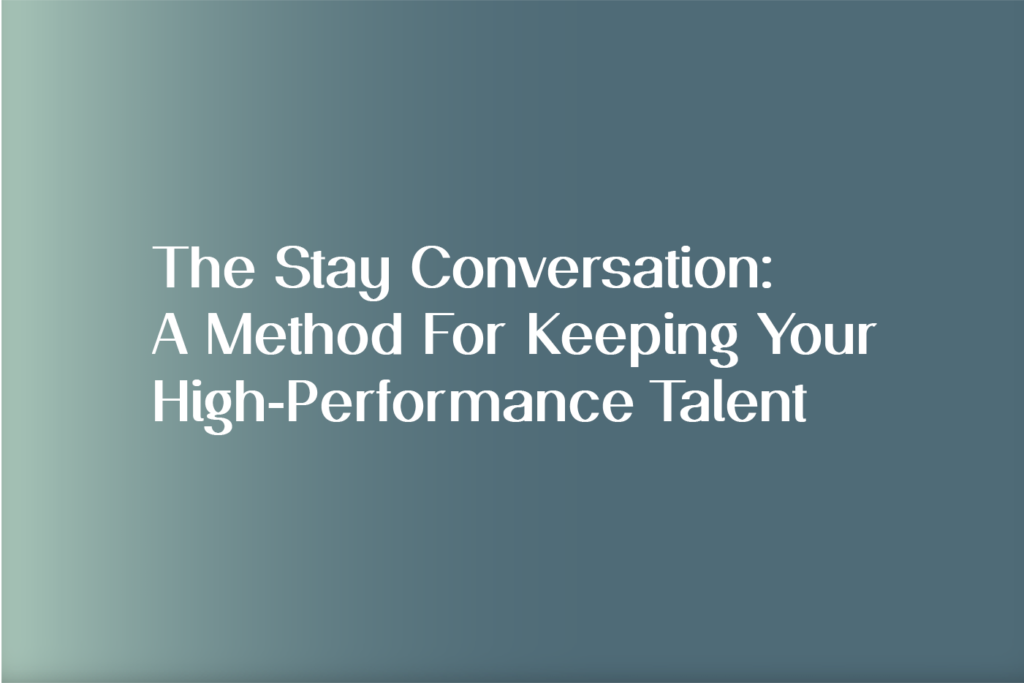As published in Forbes October 13, 2020
Organizational disruption can look and feel different for many people, and it can come in many different forms. It can be as simple as a process change (taking on more work) or as large as a team structure change (significant growth, workforce reductions, a new leader, safety incidents, employee departures, a new strategic direction, etc.). All these examples can, and often do, cause people to feel disrupted from their normal pattern of work.
Believe it or not, something very small yet highly important to a person can cause them to feel personally disrupted, and that can lead to loss of attention and productivity, feeling unsatisfied, and in some cases, feelings of deep loss.
“Stay conversations” are an important retention tool that often follow a point of disruption in an organization, but don’t always have to in order to realize the benefits. They are conversations held by a leader with their high-potential and critical talent to reinforce their value and how much the organization appreciates them and their strong future ahead. They build trust and aim to stabilize people quickly to return them to their comfortable state or keep them continually driving for results and demonstrating discretionary effort. They also play a role in building confidence and prevent talent from walking out the door to other job opportunities.
A well-executed stay conversation can increase one’s sense of purpose and commitment – two critical attributes to sustain during the intervening period. Key leadership capabilities required for successful stay conversations include empathy, advanced listening and targeted communication skills.
How To Conduct A Strategic Stay Conversation
Following a disruption, leaders should make themselves available and actively book 1:1 meetings to have stay conversations with their team. They should be conducted using the following format:
1. Welcome the employee in.
2. Explain that this is a time to connect and be as open and honest with each other as possible. Tip: Use this opportunity to ask employees how they feel.
3. Take notes about your conversation so that you can repeat back what you are hearing to the employee. This makes them feel heard and helps you demonstrate active listening skills.
4. Ask questions. Open with some easy Q&A to get the employee comfortable and talking. Here are a few suggestions:
“What do you think about the change I just shared?”
“Do you have any questions about how this impacts our team?”
“Do you have any questions about how this impacts you?”
“Can I provide any other information to you?”
“What can I do to support you right now?”
5. Reinforce the employee’s value, their strong performance and their contribution to your team and the organization. Tip: Use this time to include personal experiences working with the employee or testimonials from clients.
6. Close out. Complete the stay conversation by paraphrasing what you heard from the employee. Again, reinforce they have been heard and that they are valued. Offer up the opportunity for any last questions and then commit to sharing any new information as you receive it.
Good leadership in today’s world is imperative yet also challenging. Success comes down to people, and performance comes down to their engagement at work. Stay conversations create space for connection between leader and employee and increase the probability that high potential and critical talent will stay and continue to effectively deliver during these times.
Take action right now. Identify two of your high-performing employees and schedule an intentional stay conversation using the guide provided above.









